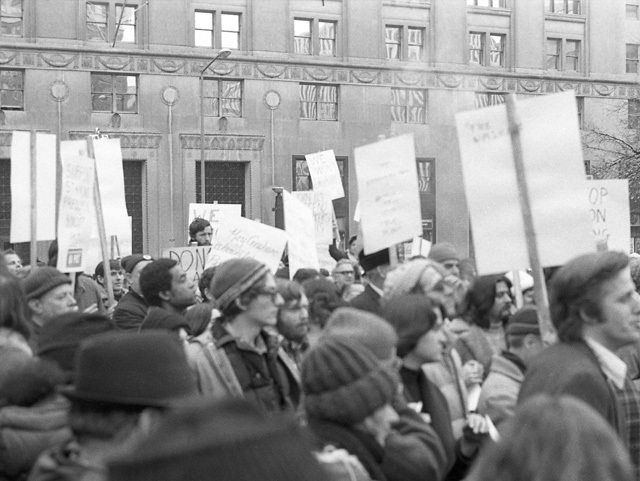Labour Day 2015
Working class struggle turned into a summer holiday
As we enjoy the long Labour Day weekend with family and friends let’s take a few moments on Labour Day Monday to remember the workers who fought for and defended our inheritance; the 5 day work week, 40 Hour work-week, vacation, maternity leave, overtime, social security, public education, put an end to child labour, establish the middle class, retirement pensions…
Today workers’ rights are taken for granted and workers’ benefits have come to be expected, but in Quebec, Canada, and internationally the Labour movement is under siege from Governments who seem to prioritization the interests of the selected few, over the interests of the electoral who put them in power.
The Quebec Liberal government is, to use Health Minister Barrette own word, ‘bulldozing’ through not only its public workers but our public services. Services like public health care and education which are a major part of what defines our values and creates our society.
If in today’s society the unions are irrelevant, then how is it that people who are working at full-time jobs are still living in poverty?
Manuel Fernandes
To protect and defend our inheritance left to the working class by the previous labour movements, in the coming weeks and months we Quebecois from all walks of life will need to ask ourselves, what will my contribution be.
If we we stand united, courageously side by side to defend the right to an honest days pay for an honest days work, to defend the values that create the society we chose, we can leave for our children and their children an inheritance which one day they too will be proud to defend.
Canadian Labour Day Quick History:
The fight for the 54 hour work-week
Labour day began as a working class struggle and massive demonstration of solidarity in the streets of Toronto in 1872. The Typographical Union went on strike for a 58-hour work-week, and at the time Unions were illegal in Canada.
On April 14, 2,000 workers marched through the streets in a show of solidarity. They picked up even more supporters along the way and by the time they reached their destination of Queen’s Park, their parade had 10,000 participants – one tenth of the city’s population.
Police arrested 24 leaders of the Typographical Union and Labour leaders decided to call another similar demonstration on September 3 to protest the arrests. On June 14 the following year, Canadian Prime Minister Sir John A. Macdonald, passed the Trade Union Act which legalized unions, soon after all unions were seeking the 54 hour work-week.
Source Canada’s History Magazine and Wikipedia
